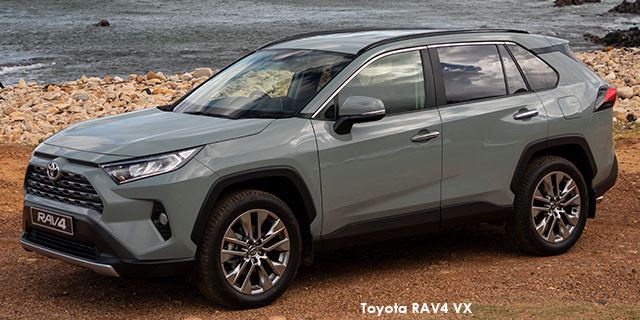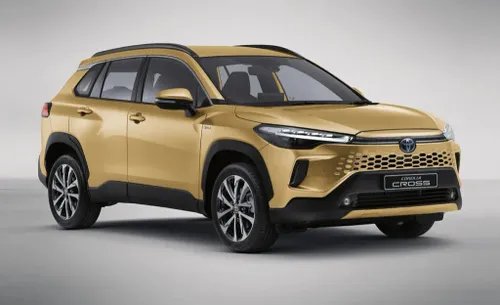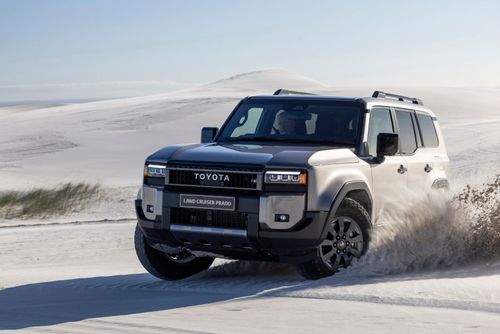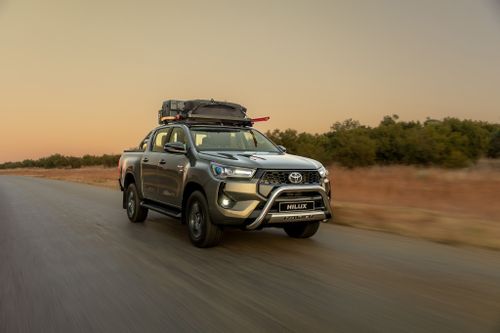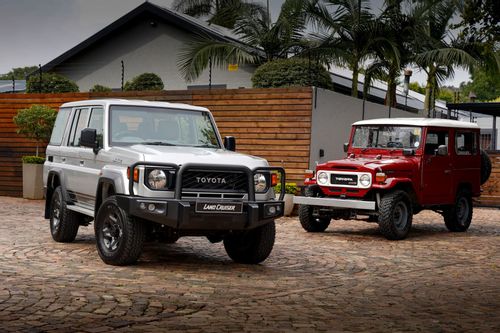EXCEEDING EXPECTATIONS - Toyota RAV4
The all-new 4Runner-styled RAV4 has arrived, and it could be the best SUV in its segment
Ever since its global debut in 1994, the Toyota RAV4 has always blazed a bright trail. After all, it has been credited as the SUV that kicked off the current compact crossover SUV trend. And recently, Toyota has been going a bit daring when it comes to their vehicle designs, meaning the latest RAV4 is far more distinctive than its sober styled predecessor. Sure, some of the new shapes might look a bit odd, but the overall effect is that of a more dynamic and individual machine.
With the 5th generation RAV4, Toyota has switched from the TNGA (Toyota New Global Architecture) C Platform that underpins the Prius and C-HR to the TNGA K version that is shared with the American Camry. That brings some changes to the proportions, as the new RAV4 rides on a 2.69m wheelbase that’s 3cm longer than before, yet its 5mm shorter at 4.6m. It’s also 10mm wider at 1.85m, while height drops by 5mm to 1.7m. Toyota claims the new unibody chassis is 57% more rigid than the outgoing version. It also now sports a front reminiscent of the 4Runner SUV, and breaks the mould that automakers typically follow with their design. Most follow an evolutionary design, however the RAV4 is revolutionary, making it impossible to confuse this and its predecessor.
The interior is also very closely styled to that of the freshly revealed Toyota Corolla Hatchback and has the new 'floating' infotainment screen, which features the new Entune 3.0 multimedia system that now includes Apple CarPlay as standard alongside hands-free access to Siri and WiFi connectivity. The interior has been thoroughly redesigned, with a dashboard that is now lower than before. This is said to create more room, while the storage space in front of the gear lever has been grown by 35mm. Even the cup holders are bigger and deeper than before. The rear loading space has a full flat floor and is 60mm longer, and has 79 litres more capacity than the previous generation, equating to 580 litres of space. Another nicety is the option of a hands-free power tailgate.
In terms of safety, the base RAV4 GX is equipped with no fewer than 7 airbags, ABS with EBD, Brake Assist, Vehicle Stability Control, Hill Ascent Control and Trailer Sway Control. Toyota Safety Sense is now offered for the first time on the top-spec VX derivative and it includes features such as Adaptive Cruise Control (ACC), Lane Departure Alert (LDA) with Steering Control, Blind-Spot Monitor (BSM) and Pre-Crash System (PCS).
Whereas the previous generation comprised a mix of diesel and petrol variants, the latest generation makes do with only naturally aspirated petrol engines. According to Toyota South Africa, there are no plans to introduce a diesel option, however the introduction of a hybrid version is on the cards. The entry-level makes do with a 2.0-litre that produces 127kW and 203Nm, up from 107kW and 187Nm in the model it replaces. The 2.5-litre also out powers its predecessor, boasting outputs of 152kW and 243Nm, up from 132kW and 233Nm. All variants are front-wheel driven, except for the two highest specced variants which feature an easy-to-use four-wheel drive system, which includes Toyota’s new Dynamic Torque Vectoring AWD, and a Multi-Terrain Select system for some extra electronic assistance through snow, mud, sand and rock modes.
There are three transmissions on offer – a six-speed manual, a continuously variable transmission (CVT) and an eight-speed automatic that features exclusively in the 2.5 VX that replaces the previous models six-speed automatic. We managed to test two variants of the latest RAV4, the 2.0 GX-R and the 2.5 VX, and because of that, we have a better understanding of the frugality of the new range. Both performed incredibly well, with the 2.0L using 6.9 litres of unleaded every 100kms, whilst the larger engine 2.5L sipped at a rate of 7.5 litres per 100kms. When you factor in that the RAV4 has a fuel tank capacity of 55 litres, you soon realise that irrespective of variant, a range of close to 800kms is very possible.
Thanks to all of this, the RAV4 has far more substance than the model it replaces. It appears more robust, is more capable off-road, is packed to the rafters with safety technologies, and its bold design is enough to convert just about anyone to being a RAV4 fan. And that is what the RAV4 is all about, after all the RAV in its name stands for "Recreational Activity Vehicle". Compared to its predecessor, it’s more athletic, efficient and aesthetically appealing, and makes quite a compelling case for itself in a sea of similarly-styled-SUVs.
The RAV4 range kicks off with the 2.0 GX, available in either manual or automatic, and is priced from R423 500. The next model up, is also a 2.0 but in luxury VX spec, carries a price tag of R513 400. Next up is the first of two AWD variants, with the 2.0 GX-R AWD priced at a very competitive R516 100. The line-up is topped by the R586 500 2.5 VX AWD, proving there is a RAV4 for any budget. It should be noted that all variants come standard with a 3-year/100 000 km warranty and a 6-year/90 000 km service plan.
